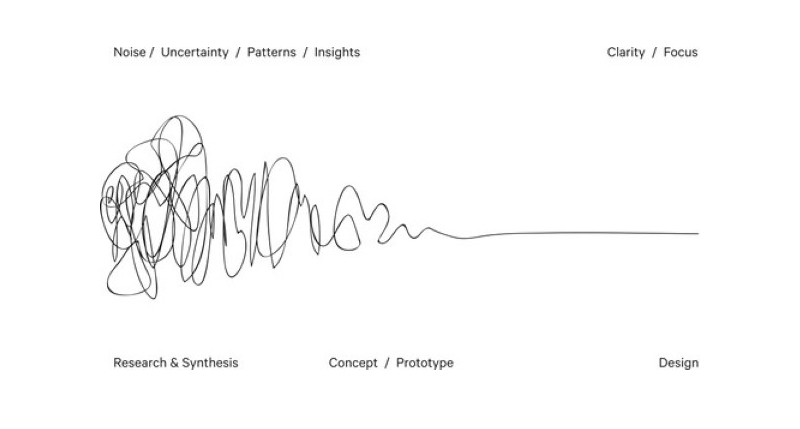
Design defined: How changing your thinking can help spur innovation
It’s a wonderful time to help shape this ever-changing practice of medicine. The amount of data generated in healthcare is astounding, and our population is becoming increasingly connected on a global scale. As a new and burgeoning field, the clinical informatics subspecialty (CIS) has been tasked with helping usher in this new era of healthcare transformation. In fact, the Accreditation Council for Graduate Medical Education defines CIS as “the subspecialty of all medical subspecialties that transforms healthcare by analyzing, designing, implementing, and evaluating information and communication systems.”1
But let’s be honest ... how exactly are we supposed to analyze, design, implement, and evaluate these things? The steps involved for each are clearly different.
In another work (KOI Pond, publication pending), my colleagues and I sought to explain each role in a more digestible manner. We linked knowledge-based activities into “analyzing” and “evaluating” systems, and we linked operations to “implementing” systems. Today, I’d like to discuss innovation and how that relates to “designing” systems. I’ll cover some of the basics as they pertain to innovation, design thinking, and design sprints.
Innovation
Unfortunately, innovation as a concept is a bit vague and often overutilized/misapplied.2–4 Simply talking about innovation without distinguishing what it actually entails would merely add to the confusion. A quick search of the literature also probably won’t help you much. In 2009, a systematic review of what’s been published thus far on innovation found 60 separate definitions of the term across disciplines.5
I like to keep things simple, so for innovation to exist you need “(a) novelty, (b) an application component, and (c) an intended benefit” with the application component being “new services, new ways of working, and/or new technologies.”6,7 Put another way, if it’s something that generates new ideas and/or intellectual property, or if it’s something that’s so new that it targets a small group of users (rather than implementing for the majority), then the application component falls under innovation. Innovative systems are the ones that disrupt the status quo, ideally in a positive manner. When it has gained enough traction that it’s now being implemented for the majority, then that component has now progressed into operations.
Design thinking
Design thinking is an interesting concept. It has roots back to Thomas Edison,8 though its use in healthcare is growing.9–12 At my health system, we have a team that works with our Chief Innovation Officer13 to teach design thinking to employees in a project-oriented fashion. Having taken several design thinking courses from different teachers over the years, I would strongly recommend them to informaticians with even a basic interest in healthcare innovation.
Design thinking follows a process of:
- Empathizing with the end user
- Defining the problem
- Ideating possible solutions
- Prototyping (and thus refining) early solutions
- Testing and validating based on usability metrics
This method has been described in more detail in other contexts,9,12,14 and it falls closely in line with Damien Newman’s design squiggle.15

While design thinking may not be exactly linear, much of this process takes an iterative approach and harnesses frequent end-user testing in a manner that seeks to achieve clarity and focus over time. This falls in line with the concept of end-user design, human factors, and usability testing.16 There are many resources that cover design thinking, the design squiggle, and usability in more detail; hopefully the above references can serve as a nice starting point.
Design sprints
If learning design thinking was like learning how to cook, then following a design sprint would be like following the recipe from a pre-packaged meal delivery service.17 The concept of a design sprint was originally developed by Jake Knapp and his colleagues while working at Google in 2010.18 After much iteration at Google, with Google Ventures, and with various technology startups, the design sprint was released en masse in a 2016 book authored by Knapp.19 Now a New York Times bestseller, that book provides a simple recipe for any who have a higher risk, high-reward question they want to tackle. It is especially useful for those who lack the time, resources, or training necessary to conduct the design-thinking process in full. Design sprints can’t be used for every task, but when applied with some manner of scrutiny, they are fast, easily accessible, and have the potential to generate high-value results. For those interested in a (mostly comedy) podcast that stems from the concept of product design and design sprints, I’d recommend listening to the “Product Breakfast Club” by Jake Knapp and Jonathan Coulton.20
Conclusion
There are many ways to approach product design. We are in an era well beyond waterfall methods for new products, and we’ve learned much from the lessons taught by the Agile Manifesto and by scrum.21,22 Today, the concepts of design thinking and design sprints may help any informatician with a knack for innovation. For those just learning about any of these terms, hopefully this primer will help pique your interest.
References
- Accreditation Council for Graduate Medical Education. ACGME Program Requirements for Graduate Medical Education in Clinical Informatics. ACGME; 2019. https://www.acgme.org/Portals/0/PFAssets/ProgramRequirements/381_ClinicalInformatics_2020.pdf?ver=2020-06-29-163724-707. Accessed September 13, 2019.
- Page T. Notions of innovation in healthcare services and products. International Journal of Innovation and Sustainable Development. 2014;8(3):217-231. https://core.ac.uk/download/pdf/42481501.pdf.
- Pol E, Ville S. Social innovation: Buzz word or enduring term? J Socio Econ. 2009;38(6):878-885. doi:10.1016/j.socec.2009.02.011
- Kahn KB. Understanding innovation. Bus Horiz. 2018;61(3):453-460. doi:10.1016/j.bushor.2018.01.011
- Baregheh A, Rowley J, Sambrook S. Towards a multidisciplinary definition of innovation. Management decision. 2009;47(8):1323-1339. https://www.emeraldinsight.com/doi/abs/10.1108/00251740910984578.
- Omachonu VK, Einspruch NG. Innovation in healthcare delivery systems: a conceptual framework. Innov J. 2010;15(1):1-20. http://www.dphu.org/uploads/attachements/books/books_1028_0.pdf.
- Länsisalmi H, Kivimäki M, Aalto P, Ruoranen R. Innovation in healthcare: a systematic review of recent research. Nurs Sci Q. 2006;19(1):66-72; discussion 65. doi:10.1177/0894318405284129
- Brown T. Design thinking. Harv Bus Rev. 2008;86(6):84-92, 141. https://www.ncbi.nlm.nih.gov/pubmed/18605031.
- Carroll N, Richardson I. Aligning healthcare innovation and software requirements through design thinking. on software engineering in healthcare systems. 2016. https://dl.acm.org/citation.cfm?id=2897687.
- Chanpuypetch W, Kritchanchai D. A design thinking framework and design patterns for hospital pharmacy management. International Journal of Healthcare Management. 2017:1-9. doi:10.1080/20479700.2017.1389479
- Roberts PW, MacLaren E, Samuelson MH. Introducing Design Thinking to Enhance Population Health Management. Healthcare Transformation. 2018;3(1):17-26. doi:10.1089/heat.2018.29049.pwr
- Gleason B, Bohn J. Using Small Step Service Design Thinking to Create and Implement Services that Improve Patient Care. Service Design and Service Thinking in Healthcare and Hospital Management. 2019:39-53. doi:10.1007/978-3-030-00749-2_3
- Stevenson JE, Euchner J. The Role of the Chief Innovation Officer. Research-Technology Management. 2013;56(2):13-17. doi:10.5437/08956308X5602003
- Dam R, Siang T. Stages in the design thinking process. Viitattu. 5AD;1:2018. https://www.interaction-design.org/literature/article/5-stages-in-the-design-thinking-process.
- Newman D. The Process of the Design Squiggle. The Design Squiggle-Central. 2016. https://thedesignsquiggle.com.
- Jaspers MWM. A comparison of usability methods for testing interactive health technologies: methodological aspects and empirical evidence. Int J Med Inform. 2009;78(5):340-353. doi:10.1016/j.ijmedinf.2008.10.002
- Courtney J. Design Thinking vs Design Sprints, what’s the difference? Medium. https://medium.muz.li/design-thinking-vs-design-sprints-whats-the-difference-47f490402077. Published May 10, 2017. Accessed September 25, 2019.
- How it Works — The Design Sprint. The Design Sprint. https://www.thesprintbook.com/how. Accessed September 25, 2019.
- Knapp J, Zeratsky J, Kowitz B. Sprint: How to Solve Big Problems and Test New Ideas in Just Five Days. Simon and Schuster; 2016. https://play.google.com/store/books/details?id=rV0JCgAAQBAJ.
- Knapp J, Courtney J. Product Breakfast Club. Product Breakfast Club. https://www.productbreakfastclub.com/. Accessed September 25, 2019.
- Fowler M, Highsmith J, Others. The agile manifesto. Softw Dev Times. 2001;9(8):28-35. http://users.jyu.fi/~mieijala/kandimateriaali/Agile-Manifesto.pdf.
- Sutherland J, Sutherland JJ. Scrum: The Art of Doing Twice the Work in Half the Time. Crown Publishing Group; 2014. https://play.google.com/store/books/details?id=93tIAwAAQBAJ.
John Manning, MD, FACEP
Councilor, Section for EM Informatics
Assistant Professor, Director of Clinical Informatics
Atrium Health's Carolinas Medical Center
Department of Emergency Medicine



